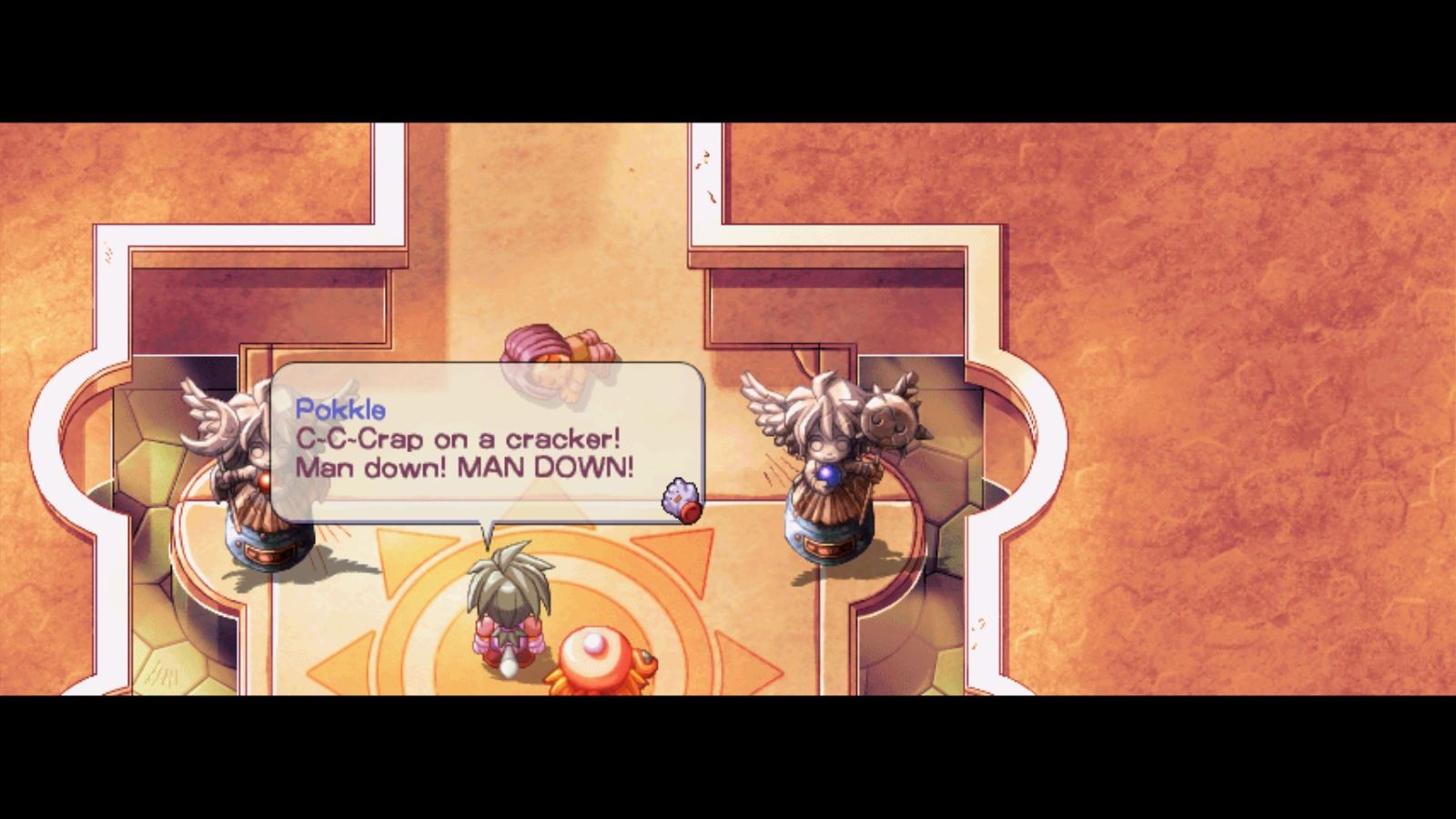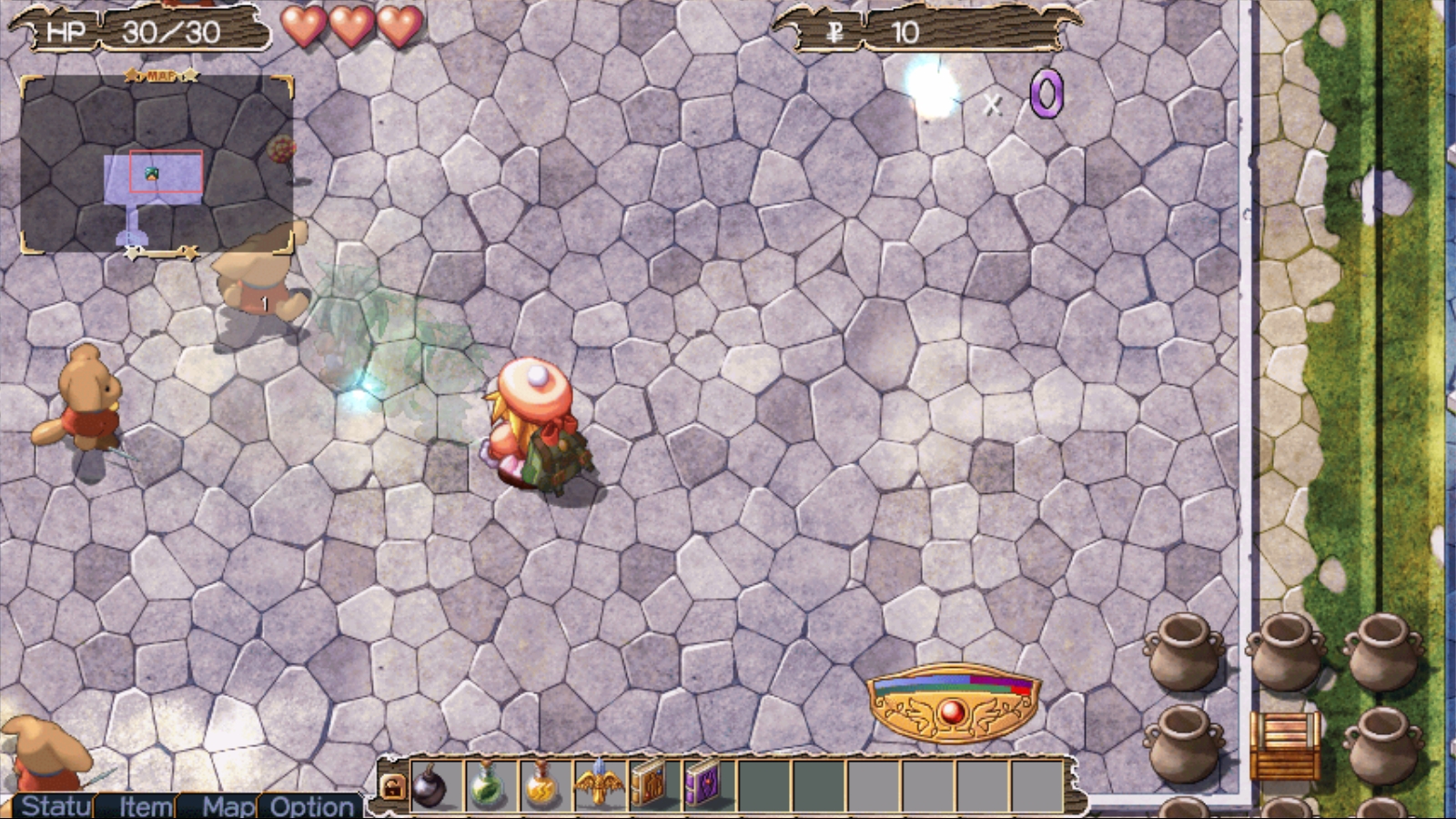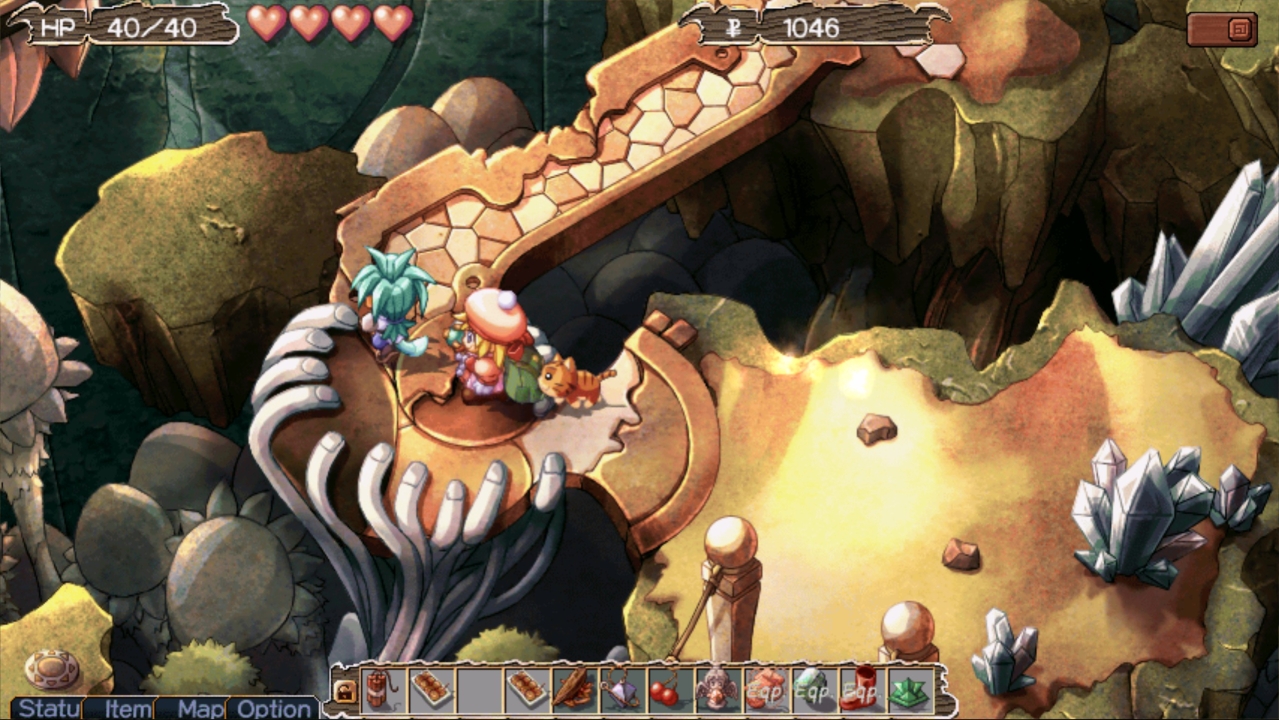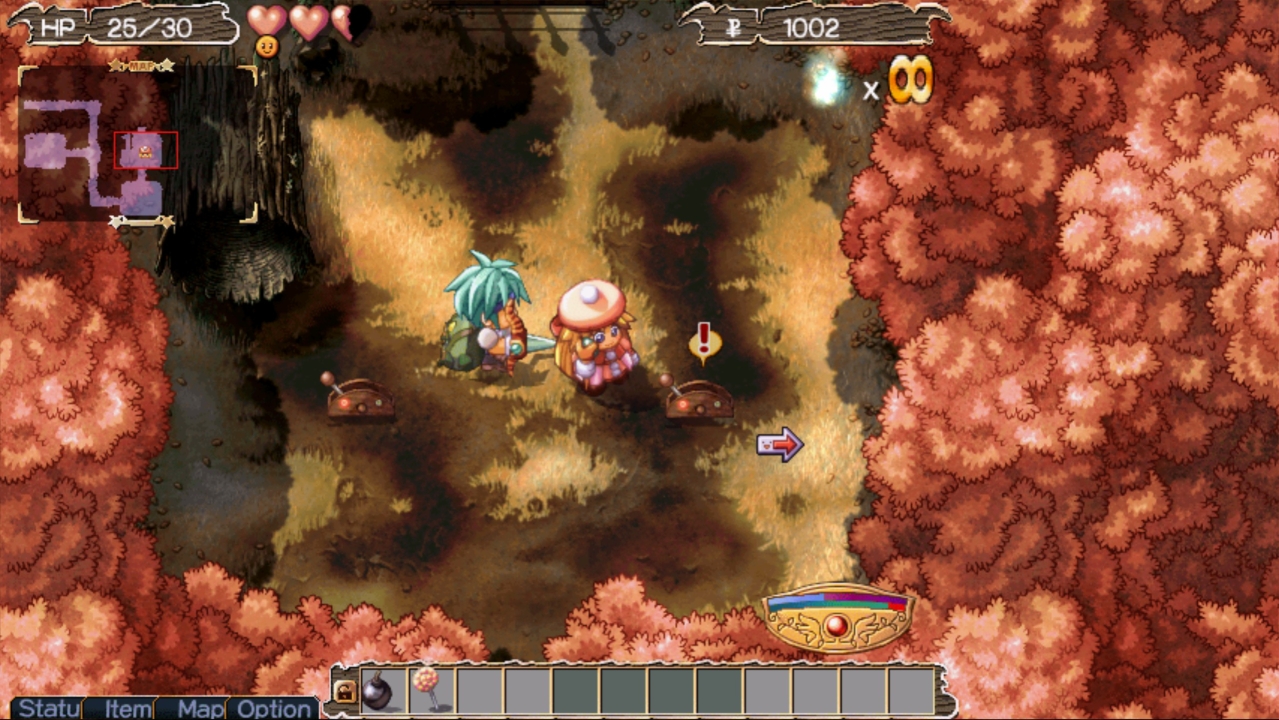The original version of Zwei was released in 2007 on the PS2, PSP, and PC in Japan – and didn’t really get tons of hype around it. There was never a giant furvor over a lack of an offcial release on the RPG-rich PSP, nor a huge demand for a fan translation after the fact. Given the game’s Falcom pedigree and action RPG-style gameplay, it did have a loyal fanbase thanks to the Ys series – but it never got an English release. Zwei takes a lot of what makes the Ys games work with its battle system and combines it with some of the funniest dialogue out there. Unfortunately, this combination of things that should work out fine together doesn’t quite gel perfectly.
Zwei’s main characters Pokkle and Pipiro are pretty interesting as a pair. Individually, the male hero Pokkle is a bit of a blank slate who just wants to be a hero to be one. The female Pipiro is far more entertaining, and is lazy, always eating or wanting food, and prides herself on sleeping in while also wearing a pink and white bonnet with pride.
It’s Always Sunny in Arges
Their chemistry together is that of a bickering pair of siblings and they do have some chemistry together. Pokkle is very much the straight man pointing out how ridiculous she is, while she is in an ever-present state of denial and everyone else just finds them to be goofy and a bit silly. Their lives are thrown for a loop when their town’s most treasured possessions are stolen by a mysterious masked man, who they see before anyone else, but opt to do nothing out of fear.
With that in mind, there’s a bit of an internal guilt trip for them because they may have been able to prevent the theft, but because they didn’t, the town’s idols are now gone and could be sold to the highest bidder. Fortunately, the town rallies behind them and does what they can to outfit the duo with help and supplies to some degree – although as per tradition, you still have to pay for things like healing items.
Variety is the Spice of Life
She’s a magic user while he attacks foes with his lance. Her shots are all straight in a line, while his dart towards enemies in a blur. Being able to switch between characters quickly is nice, but doesn’t amount to much since both characters not only have similar attack paths – they also share a life bar. Hit points can dwindle in a hurry, which is why properly stocking not only healing potions before heading out but also grabbing food items is a must. Enemies usually drop lower-end food items, but you do have a risk/reward situation to think about with them.
You can use the food items and help ensure victory, but lose the item itself. By taking a risk and trying to win without the food to restore your health, you can go to a restaurant and have higher-grade food made that allows you to level up. Simply beating enemies isn’t enough to do it, so no matter what, you have to try and keep some food items around to get further in the dungeons.
Magic and Mayhem
Dungeon layouts are fairly simplistic, with a lot of corridors to go down and a level limit so you never wind up being in too far over your head. Finding where to go within the dungeons can be tricky, but trial and error will eventually take you down the correct path. Battles are all-action and fast-paced, which means you need to make proper use of your helper item menu. Accessing these is a bit trickier on a controller-based setup since they’re either tied to a single button to use the first one in the lineup or you can choose a specific item thanks to a pause menu. Neither setup is quite perfect and you can’t change the button or key configuration within the game itself.
This isn’t a game-breaking problem, but it does make muscle memory a bit tricky since so many functions are mapped to single buttons. Changing characters and item usage are tied together, as are attacking and picking up items. Sometimes, you want to pick up an item and go for an attack instead and vice versa. Fortunately, aiming your characters works fairly well on the battlefield with either the d-pad or analog stick. Given how many angles enemies come at you, using the analog stick does actually feel better for this game, while the d-pad is usually a better option for menus.
Zwei‘s look is absolutely gorgeous. The original game’s art style was highly-detailed given the hardware it was on, and it has been upgraded a bit to suit more modern displays wonderfully. The cast’s faces are full of expression and each stands out thanks to distinct parts of their outfit. The world itself manages to look different with every area thanks to memorable theming that bathes each area in a particular color so they stick out. The animation within the adventure is a bit limited though, and does hurt the overall presentation as does the cluttered on-screen display.
The game does lack voice acting, but does feature an entertaining and mostly light-hearted soundtrack. It works well throughout the adventure, but doesn’t resonate much outside of it. Anyone expecting a classic JRPG-style soundtrack will be disappointed, but even though it isn’t an OST you’ll play on repeat after a play session, it does fit the context of what’s going on in the game and is well-constructed in that regard.
 Pros
Pros
- Gorgeous art style
- Humor-filled dialogue
- Ys-esque combat is familiar for Falcom fans
Cons
- Lack of control configuration hurts core gameplay
- Cluttered on-screen display gets in the way of the action
- The core storyline is fairly predictable
- The soundtrack falls short of genre high marks
Conclusion
Zwei: The Arges Adventure is a hilarious romp, but one that also gets in its own way more than it should. A clunky interface bogs down an otherwise solid combat system, which takes what has worked for many years with Ys and evolves it with more magic usage. Zwei is a breath-taking game to look at thanks to bolor colors and highly-detailed art for both its characters and environments. The end result is impressive to look at at all times, but the final game definitely could use some more tweaks to be more a more enjoyable experience.








